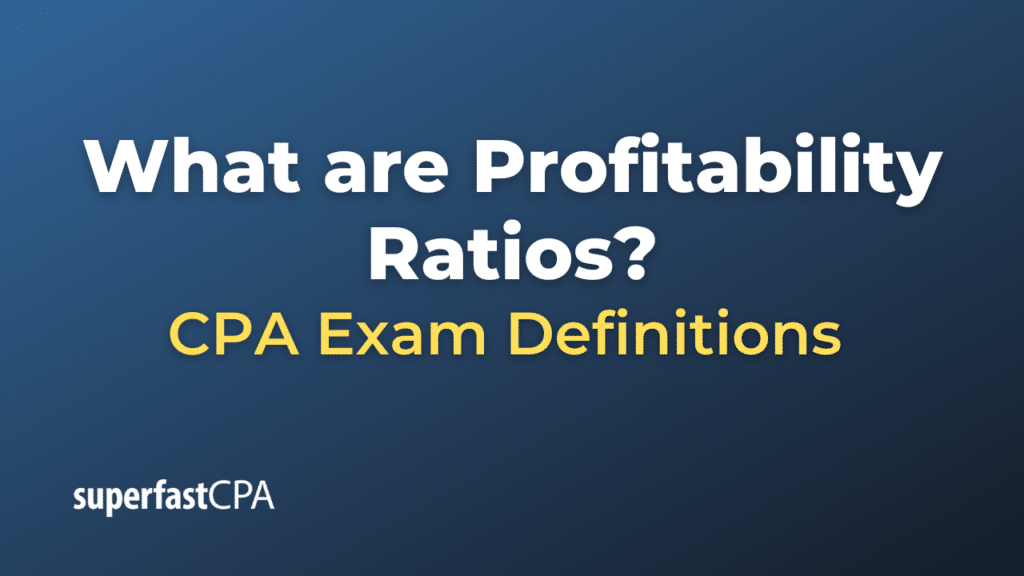Profitability Ratios
Profitability ratios are a class of financial metrics that are used to assess a business’s ability to generate earnings compared to its expenses and other relevant costs incurred during a specific period of time. They reveal the company’s ability to generate profit and return on investment. These ratios are most useful when they are analyzed in comparison to similar companies or compared to the company’s own historical performance.
Some of the key profitability ratios include:
- Gross Profit Margin: This ratio shows the proportion of money left over from revenues after accounting for the cost of goods sold. It’s calculated as: (Revenue – Cost of Goods Sold) / Revenue
- Operating Profit Margin: This ratio shows how much profit a company makes after paying for variable costs of production, such as wages and raw materials, but before paying interest or tax. It’s calculated as: Operating Income / Revenue
- Net Profit Margin: This ratio shows the percentage of revenue that’s left after all expenses have been deducted from sales. It’s calculated as: Net Income / Revenue
- Return on Assets (ROA): This ratio indicates how efficiently a company is utilizing its assets to generate profit. It’s calculated as: Net Income / Total Assets
- Return on equity (ROE): This ratio measures the financial performance of a company by revealing the amount of net income returned as a percentage of shareholders’ equity. It’s calculated as: Net Income / Shareholder’s Equity
- Return on Investment (ROI): This ratio measures the amount of return, or profit, an investment generates relative to its cost. It’s calculated as: (Net Profit from the investment / Cost of the Investment) * 100%
These ratios are widely used by investors and analysts to compare the profitability of different companies within the same industry or to analyze changes in a company’s profitability over time. It’s worth noting that these ratios should not be looked at in isolation but should be used in conjunction with other financial ratios for a more comprehensive analysis.
Example of Profitability Ratios
let’s use a hypothetical company, “WidgetCo,” to demonstrate these ratios. Here are some financial data for WidgetCo:
- Revenue: $1,000,000
- Cost of Goods Sold (COGS): $500,000
- Operating Expenses: $200,000
- Net Income: $240,000
- Total Assets: $800,000
- Shareholder’s Equity: $600,000
Let’s calculate some of the profitability ratios:
- Gross Profit Margin: (Revenue – COGS) / Revenue = ($1,000,000 – $500,000) / $1,000,000 = 0.5 or 50%. This means 50% of revenue remains after paying for the cost of producing the goods sold.
- Operating Profit Margin: Operating Income / Revenue = ($1,000,000 – $500,000 – $200,000) / $1,000,000 = 0.3 or 30%. This means 30% of revenue remains after accounting for the cost of goods sold and operating expenses.
- Net Profit Margin: Net Income / Revenue = $240,000 / $1,000,000 = 0.24 or 24%. This means 24% of revenue remains after all costs and expenses have been deducted.
- Return on Assets (ROA): Net Income / Total Assets = $240,000 / $800,000 = 0.3 or 30%. This indicates that WidgetCo is generating 30 cents of profit for each dollar of assets it owns.
- Return on Equity (ROE): Net Income / Shareholder’s Equity = $240,000 / $600,000 = 0.4 or 40%. This indicates that WidgetCo is generating 40 cents of profit for each dollar of equity owned by shareholders.
These ratios give an indication of WidgetCo’s profitability performance. For a more comprehensive analysis, you’d want to compare these ratios with other companies in the same industry or with WidgetCo’s own ratios from previous periods. Keep in mind, these are just hypothetical numbers, and actual business scenarios might include more factors and be more complex.













